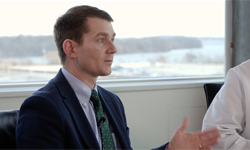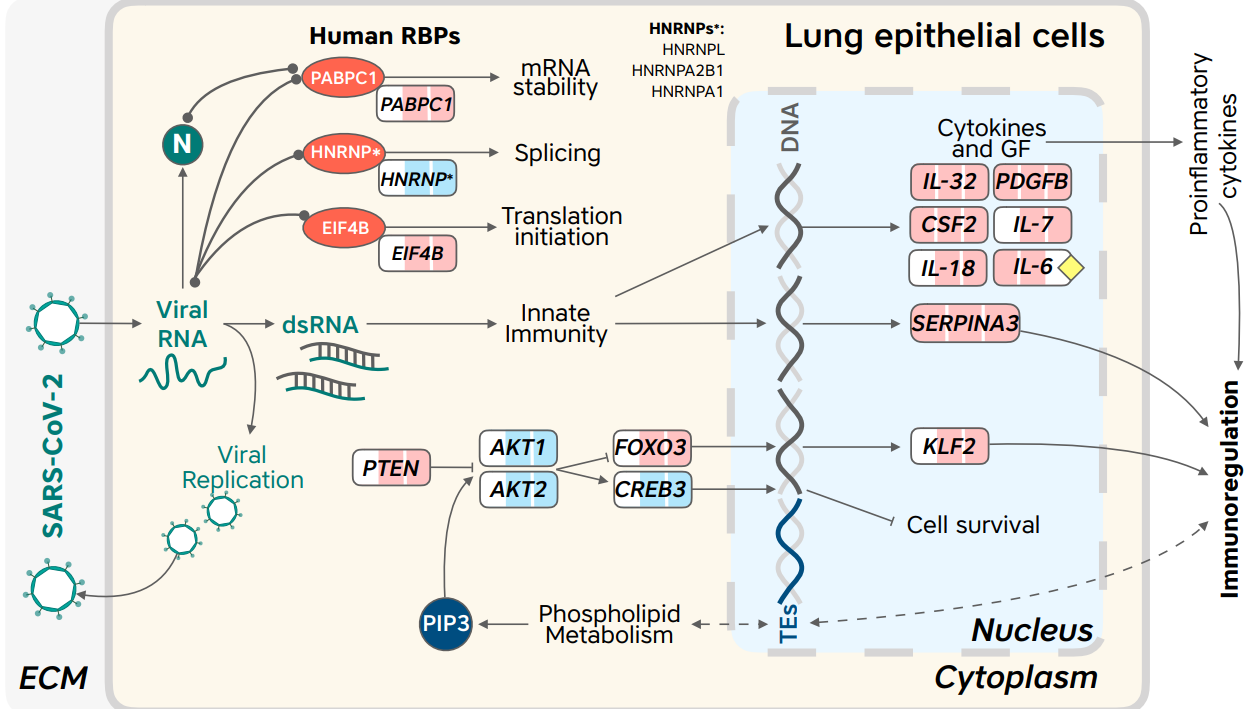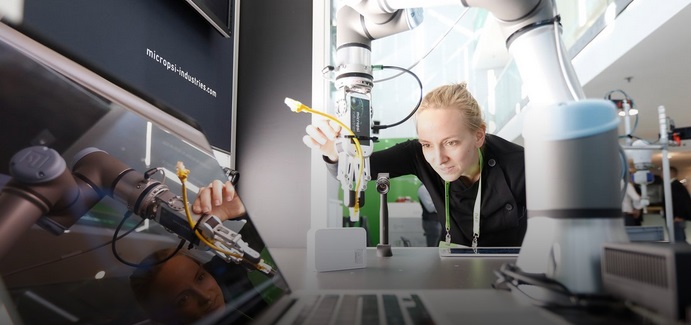Sophia Abraham always thought she would become a medical doctor. She is now pursuing a Ph.D. in computer science and computer engineering at the University of Notre Dame.
How did this aspiring medical doctor end up programming AI to recognize invasive grass species in Australia and designing drones to help with search and rescue efforts?
Many of Sophia’s aspirations originally stemmed from a romanticized view of a doctor’s role. But after hours spent working in a neuroscience lab and shadowing doctors, she realized she had a stronger passion for mechanical engineering. Despite her family’s disapproval of changing majors, she decided to take a chance on a field that interested her.
Following a passion
Sophia adjusted course after completing a mechanical engineering internship at a government think tank and seeing what the data science team was doing. She discovered that what truly interested her was the art of computer science.
“If mechanical engineers are creating the body, computer scientists are breathing life into the body,” she explained. “I realized I really wanted to be in the area of breathing life into the creation of whatever I was doing.”
Sophia decided to apply directly to several computer science Ph.D. programs. While applying for graduate programs is challenging and competitive for most students, Sophia faced the additional uncertainty of whether her background would even meet the entrance requirements.
With much perseverance and hard work, Sophia was accepted into many Ph.D. programs, despite having no relevant experience. As she spoke with professors and faculty members, many were interested in how she could translate her previous work and knowledge into their current vision and systems.
Accepting new opportunities
Sophia’s experience in her graduate program has not been conventional. Her undergraduate background and willingness to learn led to some really interesting and varied experiences in AI within her program and internships. She began training AI models in 3D mesh reconstruction, often used in various computer vision applications such as robotics, computer graphics, and augmented reality.

During an internship with Johns Hopkins University, she trained AI agents in the video game StarCraft II in goal-oriented action programming. This AI technique involves dynamic planning with a sequence of actions that activates different goals depending on the progression of the AI within the game.
To continue expanding her opportunities in AI, Sophia worked on a computer vision project using drones to recognize lost or injured persons in collaboration with rescue personnel. The model recognizes someone drowning in a river or finds someone through obscuring objects or terrain. Sophia has used similar computer vision techniques to partner with researchers in Australia to identify invasive grass species.

Finding a niche in AI research
After a long and winding journey, Sophia feels as though she is finally starting to find a niche at the intersection of ecology and machine learning. Her hope is to work on developing technologies to not only combat issues like the biodiversity crisis, but also to equip farmers with easier methods to manage crops and diagnose diseases. Through her work in this field, she hopes to mitigate issues that farmers currently face and help them through her work in artificial intelligence and machine learning.
Although Sophia’s background was unconventional for a computer science Ph.D. student, she believes that it was her drive to teach herself the material and her deep curiosity to learn and understand the phenomena that she was unfamiliar with that allowed her to progress in the field of AI. She also praises her peers, who took the time to explain challenging concepts and make her transition into the graduate curriculum as seamless as possible.
The learning curve was undoubtedly a steep one. Still, she believes that the barrier to entry was more difficult in perception than in reality and that it was feasible with the right resources and training. So despite having no coding background, she was able to overcome her lack of a traditional background and realize success in her pursuit of a career in AI.
Sophia took the road less traveled and made decisions that many questioned. Still, she followed her heart and discovered newfound passions for ecology, machine learning, and AI. Her previous experiences guided her to what she really wanted to pursue, and it turned out to be one of the most rewarding decisions for her—both personally and professionally.
Join us at GTC 2022 for the session, 5 Paths to a Career in AI on September 19. And hear more from Sophia and her colleagues at the panel session, Enabling Unconventional Applications Using AI: A Unique Perspective on September 20.
You can also check out How to Start a Career in AI for more key tips. Then get started with free, on-demand NVIDIA AI essentials that will equip you with the fundamentals of AI, data science, graphics, and robotics.










